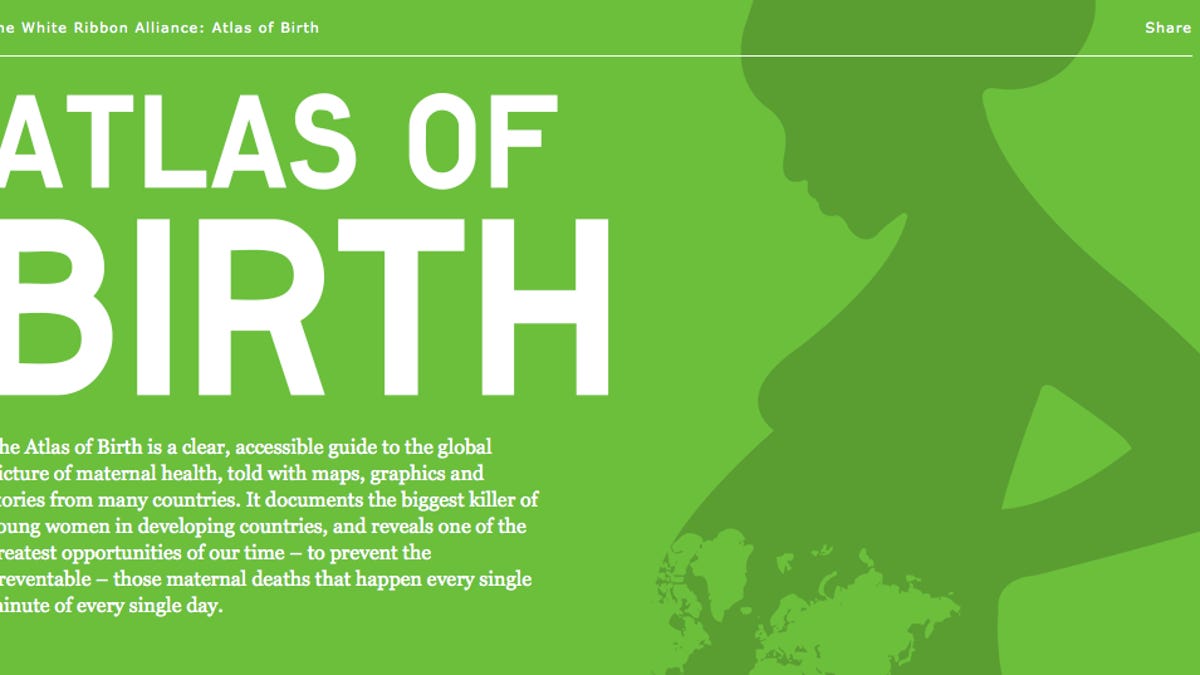Atlas of Birth: Mapping maternal health online
Social scientists at the University of Southampton uncover telling trends in maternal health--during pregnancy, childbirth, and beyond--with online maps using UN and WHO figures.

When social scientists at the University of Southampton began to map out global maternal health trends from United Nations and World Health Organization data, they were able to visualize several trends more clearly.
Working with the White Ribbon Alliance for Safe Motherhood and the University of Aberdeen, the researchers are producing online maps, a book, a short film, and more. They call it The Atlas of Birth project.
The Web site currently features 18 maps on topics ranging from literacy to genital mutilation to abortion; five case studies on women in Ethiopia, Tanzania, Senegal, and Yemen; and statistics on a wide range of issues.
Some of the data is unsurprising. More than 99 percent of maternal deaths take place in developing countries, the majority in India and sub-Saharan Africa. (Most births by women ages 16 and under occur in these countries, as well, and two-thirds of these women deliver without a midwife or health worker.)
Other figures might raise an eyebrow or two. While 40 percent of women of reproductive age live where abortion is highly restricted--and most of these women are in developing countries--in the United States, where abortion is legal, only 13 percent of counties have so-called safe abortion services.
"We are using data from the United Nations and the World Health Organization to give a comprehensive picture of maternal health from around the world," Zoë Matthews, a researcher at the university's Centre for Global Health, Population, Poverty and Policy, said in a news release. "Part of the project involves presenting the information in an easy-to-use online map, to help get key facts direct to policymakers."
The project is funded by the Partnership for Maternal, Newborn, & Child Health, in conjunction with the Norwegian government.

